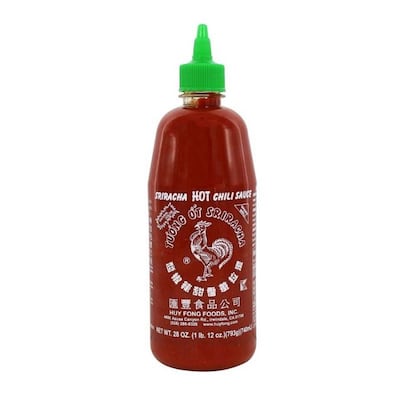Anyone who has been to southeast Asia probably will be familiar with the big bottles of hot chili sauce that sit on tables at fast-food outlets. Srirachaa – which at its most basic contains chilli peppers, vinegar, garlic, sugar and salt – can be relied on to add a kick to any dish.
The recipe varies from place to place but Sriracha generally describes a hot sauce believed to come from the seaside town of Si Racha, which is not far from the tourist trap of Pattaya in Thailand. Sriracha sauce is popular in the US too where it is also made. It’s a hipster favourite and sales are booming. When Kylie Jenner put up a post on Instagram asking, “Don’t you just love sriracha bottles”, it got more than a million likes.
Fans of American sriracha say it doesn’t taste as sweet as Thai versions. That may be because it often has more chilli. The most popular American brand is Huy Fong, which is on sale at such stores as the Asia Market in Dublin. It was developed by David Tran, a refugee from Vietnam who landed in the US in the 1960s. The former chilli pepper farmer says he was trying to recreate a taste of home in California – and to make a living. He now has a multimillion dollar family business selling his sauces around the world.


Sriracha from Thailand often has about 60 per cent chili, but the Huy Fong sauce is 82.30 per cent, according to the label. The next ingredient is sugar, then salt, garlic and distilled vinegar. Sugar is the second ingredient on the list but it still only makes up just about 10 per cent of each squeeze.
We know this because the nutrition panel shows that 100g of sauce has 10g of sugar. With so much chilli, there isn’t room for much else. It also has E202 (potassium sorbate) and E222 (sodium bisulphite) as preservatives, and E415 (xanthan gum) as a stabiliser. So there are sulphites, which can cause a reaction in some people.
Huy Fong’s sauces are made from sun-ripened jalapeno peppers, which are mild to medium on the Scoville scale of heat. Though I’m not sure I agree “It is a good choice with dishes to add a soothing and spicy taste”. Who’s heard of a soothing chilli?
There is no added colouring so the vibrant rusty red comes just from the main ingredient.
The same goes for the Flying Goose brand of sriracha hot chili sauce, which is from Thailand and is equally ruddy. A sticker on the front proclaims “natural colour” and there are no added colourings. It has less chilli than the Huy Fong brand at just 61 per cent, which will suit those with sensitive tongues. It also has sugar, water, salt and garlic. If it stopped there, it would be very enticing. However, it also has xanthan gum, acetic acid, citric acid, potassium sorbate and monosodium glutamate, the much-criticised flavour enhancer. The Mayo Clinic notes that researchers have found no definitive evidence of a link between MSG and symptoms such as headaches, flushing and tingling. There is plenty of anecdotal evidence, however, so it advises avoiding the additive if you believe you react badly to it.

As is standard with Asian products, the Flying Goose label is a riot of notices, this time in four languages: Chinese, Thai, Vietnamese and English. There’s Arabic too, though just one word over a sign from the Central Islamic Council of Thailand to denote that the sauce is halal. So it can be happily lavished on food by Muslims.
Spicy keychup
A German version from Kühne, another family business, hardly seems worthy of the name sriracha given that its main ingredient is tomato puree. It’s more of a spicy ketchup. It also has red and green pepper (13 per cent), sugar, spirit vinegar, modified starch, garlic (2.8 per cent), chilli, salt, red and green jalapeno chilli (1.6 per cent), ancho chilli (0.2 per cent) and garlic extract. Ancho chillies are dried, mild peppers. Where this one wins out is in the lack of additives and preservatives. The same is true of Thai Gold. It has just water, red chili (27 per cent), cane sugar, rice vinegar, garlic, tapioca starch, sea salt and xanthan gum.
Anyone with a taste for chilli can have fun trying the different varieties of sriracha, all of which claim to be the authentic taste. Just make sure to ask for “sir-ah-cha” – the Thai language drops that first “r” – if you want to sound like a real foodie.
FOOD LABELS SERIES
- Bread
- Soup
- Crisps
- Sliced ham
- Cream crackers
(search other food labels articles here)


















